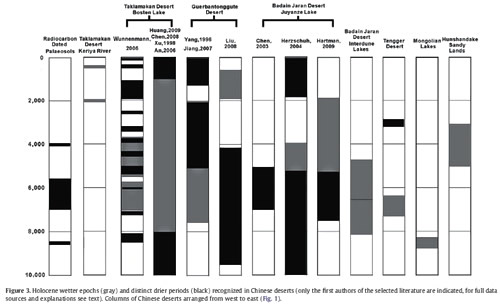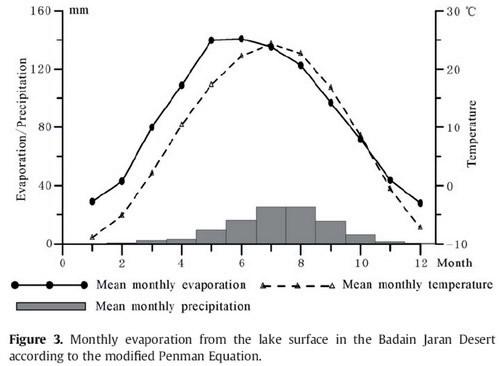Using the Badain Jaran Desert of western China as the study site, Yang Xiaoping and his collaborators have achieved the first realistic estimate of the mean annual evaporation from lake surfaces and dune slopes in the hyper-arid environment of the middle latitudes. Their results show that the mean annual evaporation is ~1040 mm from the lake surface (see Figure from Yang et al., 2010) and ~100 mm from land surfaces in the southeastern part of the desert. Both values are much lower than previously published in literature. On the basis of the new chronology of lake level change, established by radiocarbon and U-series disequilibrium dating methods, they have concluded that high lake levels and a wetter climate began at ca. 10 ka and lasted until the late mid-Holocene in the Badain Jaran Desert. They have found out that the greatest extension of lakes in the inter-dune depressions occurred during the mid-Holocene, and relatively intensive human activity took place in the Badain Jaran Desert during the late-middle Holocene. Further they have pointed out that the wetter climates during the Holocene were likely triggered by an intensified East Asian summer monsoon associated with strong insolation.


For details of this study please see the paper: Yang, X., Ma, N., Dong, J., Zhu, B., Xu, B., Ma, Z., Liu, J., 2010. Holocene hydrological and climatic changes in the Badain Jaran Desert, western China. Quaternary Research 73, 10 – 19.
Download Here